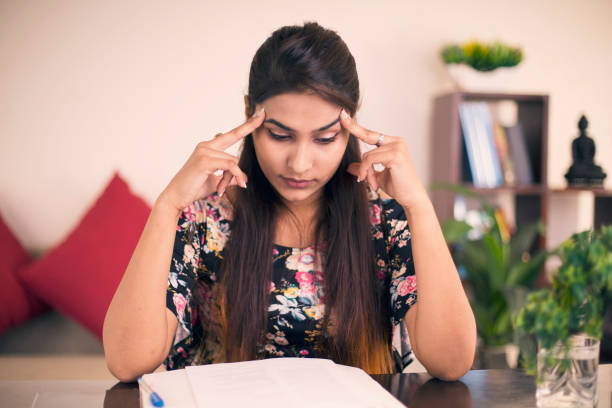Exam week can feel like a monster looming over you. The pressure to perform, the endless studying, and the fear of blanking out can make your heart race and your mind go into overdrive. This feeling, known as exam anxiety, is completely normal, but if left unchecked, it can seriously hurt your performance.
The good news? You have a powerful tool to fight it: meditation.
Meditation isn’t just about sitting quietly for hours. It’s a skill you can train, just like a muscle, to help you stay calm, focused, and in control, even when the pressure is on. Research shows that just a few minutes of daily meditation can lower stress hormones like cortisol. It can also boost your memory and help you think clearly under pressure.
Here are some of the best meditation techniques students can use to reduce exam anxiety and succeed.
The Science of Exam Anxiety: What’s Really Happening?
Contents
- 1 The Science of Exam Anxiety: What’s Really Happening?
- 2 The Core Principles of Meditation for Students
- 3 Foundational Techniques: Your Go-To Tools
- 4 Advanced Techniques for Deep Focus and Calm
- 5 The Role of Lifestyle in Supporting Your Meditation Practice
- 6 Practical Strategies for an Exam-Proof Mindset
- 7 Frequently Asked Questions
- 8 Final Thoughts
Before you can fight exam anxiety, it helps to understand what’s happening in your brain and body. When you feel stressed, your body’s “fight-or-flight” system kicks in. This is a survival response that was helpful for our ancestors when they faced a tiger, but it’s not so useful when you’re facing a biology exam.
In this state of panic, your body releases a stress hormone called cortisol. This hormone increases your heart rate and makes your mind race. While a little bit of this can help you focus, too much can actually harm your ability to think clearly. It can make it hard to recall information you studied, and it can block your ability to solve problems. This is the main reason why you might feel your mind go blank during a test. Your body is ready to run or fight, not sit and take a test.
Meditation works by telling your nervous system to calm down. It lowers your cortisol levels and activates your “rest and digest” system. This brings your body back to a calm state, allowing your brain to function at its best.
The Core Principles of Meditation for Students
Meditation isn’t about clearing your mind completely. That’s a myth. It’s about training your focus and learning to observe your thoughts without getting caught up in them.
- Mindfulness: This is the key. It’s the practice of paying attention to the present moment without judging it. When you’re worried about an exam, your mind is in the future. Mindfulness brings you back to the “now,” where you can actually get work done.
- Non-Judgment: When a distracting thought comes up, don’t get mad at yourself. Just notice the thought, acknowledge it, and then gently bring your focus back to your meditation. The goal isn’t to be perfect; it’s to practice coming back.
- Consistency: Just like exercising, meditation gets easier and more effective the more you do it. A daily practice of just 5-10 minutes is much better than trying to meditate for an hour once a week.
Foundational Techniques: Your Go-To Tools
These techniques are simple, powerful, and perfect for beginners. You can use them anywhere, anytime you feel anxious.
1. The Power of Your Breath
Your breath is your anchor to the present moment. When you feel anxious, your breathing becomes fast and shallow. By taking control of your breath, you signal to your body that you are safe, calming your nervous system and clearing your mind.
- The 4-7-8 Breathing Technique: This method is a quick way to calm your nerves before a study session or an exam.
- Find a comfortable spot, either sitting or lying down.
- Exhale completely through your mouth, making a whoosh sound.
- Inhale quietly through your nose for a count of 4.
- Hold your breath for a count of 7.
- Exhale completely through your mouth, making the whoosh sound, for a count of 8.
- Repeat this cycle 3-4 times. This technique slows your heart rate and helps you focus on a simple rhythm. This makes it harder for anxious thoughts to take control.
- **Box Breathing:** This is a simple and powerful technique. Professionals use it to stay calm in high-pressure situations.
- Inhale through your nose for a count of 4.
- Hold your breath for a count of 4.
- Exhale through your mouth for a count of 4.
- Hold your breath for a count of 4.
- Think of it like drawing a box with your breath. Repeat this cycle a few times until you feel your body relax.
- Alternate Nostril Breathing: This is an ancient technique that helps calm your mind and balance your energy.
- Sit comfortably with your spine straight. Use your right thumb to close your right nostril.
- Inhale slowly through your left nostril.
- Close your left nostril with your ring finger and release your thumb from your right nostril.
- Exhale through your right nostril.
- Now, inhale through your right nostril.
- Close your right nostril and release your ring finger from your left nostril. Exhale through your left.
- Repeat this pattern for a few minutes. It might sound complicated, but it’s very easy to learn and helps bring a sense of calm to your whole body.
2. The Body Scan
This is a great technique to use before bed to release tension and prepare your mind for a good night’s sleep.
- Lie down on your back in a comfortable position. Close your eyes and take a few deep breaths.
- Bring your attention to your feet. Notice any feelings there—warmth, coolness, or tension. Breathe into your feet and, as you exhale, imagine the tension leaving your body.
- Slowly move your focus up your body, from your feet to your calves, knees, and thighs. With each breath, release any tension you find. Pay special attention to your shoulders and neck, where students often hold a lot of stress from hunching over books.
- Continue all the way up your body, through your stomach, chest, arms, hands, neck, and finally your head.
The body scan helps you connect with your physical self. It grounds you in the present and helps you let go of stress. You can also do a mini-body scan while sitting at your desk for a quick reset.
Advanced Techniques for Deep Focus and Calm
Once you’ve mastered the basics, you can try these techniques to deepen your practice.
Loving-Kindness Meditation (Metta)
Sometimes, exam anxiety is tied to self-criticism or a fear of failure. This technique helps you build a more positive and loving relationship with yourself.
- Sit in a comfortable position and close your eyes. Take a few deep breaths.
- Repeat these phrases in your mind, slowly and with feeling:
- “May I be safe.”
- “May I be healthy.”
- “May I be happy.”
- “May I live with ease.”
- After repeating them for yourself, you can extend the same wishes to a loved one, a neutral person, and then to all beings.
This practice can lower anxiety. It replaces stress and fear with warmth and kindness for yourself and others.
Walking Meditation
This is perfect for students who find it hard to sit still. It allows you to practice mindfulness while moving your body.
- Find a quiet, safe path where you can walk without distraction.
- Start walking at a slow, calm pace.
- Bring your full attention to the feeling of your feet touching the ground. Notice the sensation of lifting your foot, moving it through the air, and placing it back down.
- Try to feel the weight of your body shifting from one foot to the other.
- If your mind wanders, gently bring your attention back to the feeling in your feet.
Walking meditation is a great way to take a study break and get your body moving while calming your mind.
Focus Meditation
This technique is excellent for building concentration, which is a major help during long study sessions.
- Find a small object to focus on, like a lit candle or a simple pencil on your desk.
- Sit comfortably and gently focus your eyes on the object.
- Notice all the details of the object—its shape, color, and texture. Don’t label it with words in your mind. Just observe.
- When your mind wanders, which it will, just bring your attention back to the object without judgment.
This practice trains your brain to stay focused for longer periods, a skill that directly helps with studying and taking exams.
The Role of Lifestyle in Supporting Your Meditation Practice
Meditation works best when it’s part of a holistic, healthy lifestyle.
The Importance of Movement
Meditation is often seen as a replacement for exercise, but they actually work together. Light activities, such as a brisk walk or a quick yoga session, can ease physical tension. This makes it easier to sit still and meditate later.
Nutrition for a Calm Mind
What you eat can affect your anxiety levels. Foods high in sugar and processed carbs can give you a quick energy spike followed by a crash, which can increase stress. Instead, focus on a balanced diet with whole foods, fruits, and vegetables. Foods like almonds, avocados, and leafy greens are known to help reduce stress.
Digital Detox and Mindfulness
Your phone is a major source of stress. The constant notifications and the pressure to be “on” can add to your anxiety. Try setting aside specific times to check social media and put your phone on airplane mode when you’re studying or meditating. A digital detox, even a short one, can work wonders for clearing your mind.
Practical Strategies for an Exam-Proof Mindset
Meditation isn’t just a 10-minute activity; it’s a way of life that can support your studies.
The Power of a Pre-Exam Routine
What you do in the hours before a test can have a huge impact on your performance.
- The Night Before: Stop studying an hour before bed. This gives your brain time to de-stress and store information. Instead of cramming, do a 10-minute body scan meditation to prepare for sleep.
- The Morning of the Exam: Avoid reading notes at the last minute. This just adds to your anxiety. Instead, do 5 minutes of box breathing. Eat a healthy breakfast, drink some water, and trust that you have prepared well.
Creating a Meditation “Sanctuary”
Your environment can have a big effect on your practice.
- Find a quiet corner in your dorm room. You don’t need a lot of space.
- Turn off your phone and any other devices.
- If your roommates are noisy, try using noise-canceling headphones or earplugs.
The Importance of Consistency over Duration
Don’t feel pressured to meditate for a long time. The biggest benefits come from doing it every day. A quick 5-minute session is more effective than an hour-long session that you only do once a month. Make it a non-negotiable part of your daily routine.
Frequently Asked Questions
Q1: What if I can’t stop thinking? Is that a sign I’m bad at meditation?
A: Not at all! A wandering mind is a normal part of the process. The whole point is to notice when your mind wanders and gently guide it back. It’s a workout for your brain. The more you do it, the easier it gets.
Q2: Is this a waste of my study time?
A: No, it’s a wise investment of your time. Meditate for a few minutes. You’ll feel more focused and less anxious. This helps you study better in the time you have. Think of it as a mental warm-up.
Q3: When should I meditate?
A: The best time is whenever it fits your schedule. Many people find it helpful to meditate first thing in the morning to start the day calmly, or before bed to help with sleep. You can also take short meditation breaks during long study sessions.
Q4: Can I use a meditation app?
A: Yes, apps like Headspace, Calm, and Insight Timer are great for beginners. They provide guided meditations and can help you stay on track.
Q5: What should I do if I panic during an exam?
A: If you feel a wave of panic, don’t try to fight it. Just focus on your breath. Close your eyes for a moment, and do a few rounds of the 4-7-8 or box breathing technique. This will calm your nervous system and help you get back on track.
Q6: What if I fall asleep while meditating?
A: That’s a sign that you were probably very tired! It’s okay. If it happens often, try meditating in a sitting position instead of lying down. This will help you stay more alert.
Q7: Can I listen to music while I meditate?
A: It depends on the type of meditation. For focus or breathing exercises, silence is usually best. But if you’re doing a more relaxing meditation or a guided one, listening to calming music or natural sounds can be very helpful.
Final Thoughts
Exam anxiety can feel overwhelming, but it doesn’t have to define your experience. You can use simple meditation techniques to keep your mind calm under pressure. This helps improve your focus and lets you perform at your best. Remember, it’s not about being perfect; it’s about being prepared. The skills you gain from meditation will help you with exams and last a lifetime.





